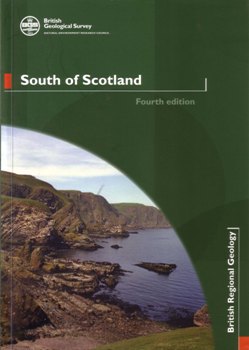 South of Scotland - Fourth Edition
South of Scotland - Fourth Edition
Applied geologists in the UK are lucky that we have BGS to provide good and generally reliable background information on the geology across the whole country. From time to time people may moan about how long it takes for a map to be revised or a new edition of a book to be produced – my personal grumble is the Pateley Bridge sheet, still the 1889 Old Series edition – but when the product is out the quality is obvious and has improved over the years.
The new series of regional guides is a case in point. Starting with Pennines and adjacent areas in 2002 and culminating in South of Scotland in late 2012 seven new guides have been produced. The improvements over the earlier ones are obvious at a glance. The use of full colour throughout hugely improves the clarity of photographs, maps and diagrams and greatly enhances the value of the book to its readers. An extract of the 1: 625 000 bedrock map extending to the area surrounding the region is also provided in a pocket inside the back cover.
To my mind however, the most significant improvement is each book puts the regional geology into a wider context, not just the surrounding area but also the global palaeogeographical history, thereby giving the reader a far better explanation of how the various rock-types relate to each other and making the books valuable teaching aids and sources of information at all levels. Each edition addresses applied geology in a chapter on Geology and Man covering the geological resources in the region, man’s activities that are causing impacts such as mineral exploitation and waste disposal and geology-based threats such as earthquakes.
The new South of Scotland edition replaces the 1971 version and incorporates much of the research completed during the intervening four decades. A quick examination of the reference lists for each chapter shows significant numbers were published after 1990 with may since the millennium building on the knowledge from earlier work. As with the others in the series I am pleased to own a copy and know that I will get valuable information from it as well as the enjoyment of learning more of the geology of this region.
Sadly, the great improvement in the new series of regional guides underscores the paucity of those that are yet to be revised particularly East Anglia and adjoining areas and the Wealden district. Seven new editions in a decade is a praiseworthy achievement but with another 16 to go (depending how they are counted) we can only hope that BGS are able to increase the rate at which these revisions take place.
Reviewed by Rick Brassington
SOUTH OF SCOTLAND – 4th ed.
STONE P et al., Published by: British Geological Survey 2012 ISBN: 978 085272 694 5 Pbk 247pp List price: £18.00
http://shop.bgs.ac.uk/Bookshop/
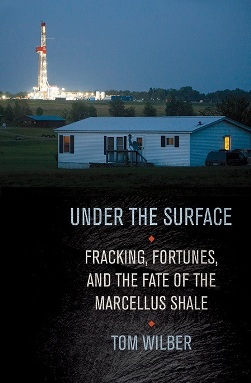 Under the Surface
Under the Surface
High volume hydraulic fracturing and horizontal drilling techniques have allowed natural gas and oil in Devonian shales to be exploited across the United States of America, and will likely be coming to a basin near you, soon. The growth and impact of this controversial industry has polarised opinion and finding an impartial source of information is difficult, especially when some leading academic geologists have been funded by the industry.
As a welcome antidote to the bias in so much coverage, this is a scrupulously balanced journalistic account of events during the shale-gas boom in Pennsylvania from 2007 to 2012. Sadly for some of those involved, it is like a story of a ‘speed-dating’ night leading to an inevitable divorce five years later. The author uses official documents, eyewitness testimony and transcripts of meetings to set the various scenes, from the geology and fracture sets of the Marcellus Shale, through the nefarious activities of the gas companies’ land-men buying up leases, to the high hopes of landowners and leaseholders, and their eventual disappointment.
The story takes a turn for the worse, for some, when 'incidents' occur in the vicinity of drill rigs - methane explosions at domestic wells, diesel and wastewater spills, and private water supplies turning brown and frothy. Lawyers and lawsuits soon follow, and New York State bans 'fracking' while it learns from the problems encountered in Pennsylvania.
This is a faultlessly edited book, scholarly in its attention to detail and to its sources, but still manages to enthrall like a page-turning thriller. The author makes sure the facts are presented accurately and fairly, but also manages to slip in colourful details like the pattern on a lawyer's tie and a leaseholder's hairstyle. It would have benefited from a map of the locations discussed, specifically in New York and Pennsylvania. It will make interesting reading for energy company executives, activists on both sides of the debate, geologists interested in the personal impact of their science, and anyone who may one day be living in the vicinity of a gas pad or thinking of signing a lease with a shale-gas company.
Reviewed by Lewis McCaffrey
UNDER THE SURFACE: FRACKING, FORTUNES, AND THE FATE OF THE MARCELLUS SHALE
TOM WILBER, Published by Cornell University Press, 2012, ISBN: 978 0 8014 5016 7 hbk 272pp List price: US$27.95
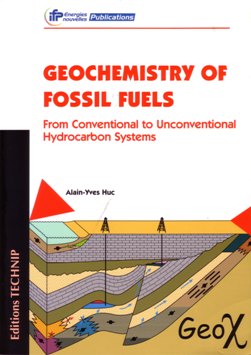 Geochemistry of Fossil Fuels
Geochemistry of Fossil Fuels
This book is an excellent and informative introduction to the major aspects of the geochemistry of fossil fuels, in particular of petroleum systems. Alain-Yves Huc is a world-renowned specialist in the field, with an extensive publication history in the subject and is well placed to provide, as intended, a general summary of the topic. The book is well written for the technical specialist, yet easy to read and hence will appeal to a wider audience including both non-specialists and undergraduate students interested in the field (perhaps even, as suggested by the author, serving as course material for teaching purposes).
The book is well structured, beginning with an introduction into the basics of oil and gas composition which lays excellent foundations of understanding for the more junior reader. The main focus of this volume is the functioning of a petroleum system, which is covered by an extensive second chapter. This progresses logically through source-rock formation, oil and gas generation to migration. Of particular interest is the insight into basic methods of source-rock assessment. Here the author covers the key elements of source rock analysis both routine and alternative in detail enough to allow understanding without overloading the reader.
Reservoir geochemistry and the effects of biological, physical and chemical processes, including biodegradation and thermal cracking within the reservoir and its influence on the hydrocarbon end product are covered briefly. A short chapter exploring production geochemistry including assessing reservoir fluid composition and production monitoring is also included. The book concludes with an informative chapter devoted to hydrocarbons in ‘unconventional’ settings, particularly of interest as these fuel sources have become an increasingly significant part of our energy supply. The settings are explored as part of the ‘extended petroleum system’ and include oil shales, gas hydrates, geological biogas, coal and coal-bed methane.
Diagrams and figures are ample and informative. Plentiful annotated colour photographs and diagrams accompany the text. The author has provided a comprehensive index as well as plentiful useful references throughout, which along with the selected additional readings makes this a good reference volume (though one might complain that some of the references are quite old). An interesting read, both for those in the field and others with a general interest in the subject.
Reviewed by Laura McParland
GEOCHEMISTRY OF FOSSIL FUELS: FROM CONVENTIONAL TO UNCONVENTIONAL HYDROCARBON SYSTEMS.
HUC H Y, Published by: Editions TECHNIP (2013) ISBN: 978-2-7108-0990-6 (pbk) 254pp. List price: £50,
www.editionstechnip.com
 Climate Forcing of Geological Hazards
Climate Forcing of Geological Hazards
In the preface to this volume, the editors state their intention that it should reinforce the notion that anthropogenic climate change will directly impact upon the geosphere. In this excellently illustrated and well communicated text, they certainly achieve this. Bringing together an impressive range of expertise, this collection of papers outlines numerous ways by which changes in climate force a dynamic response in the form of multiple natural hazards.
The first two chapters present an overview of key relationships, establishing the big picture and describe the relationship between climate and the geosphere response. These two chapters alone are a rich source of information and inspiration for further reading. They also benefit greatly from a number of helpful summary tables. For practitioners, policy-makers and others interested in global environmental change, they offer an informative and convincing overview.
For academics, students and professionals, chapters three through 12 give the detail, case studies, and ‘further reading’ lists that they will expect. Each chapter examines in detail a particular climate-geosphere relationship and its impacts. Chapters three to five examine the impact of climate change on various volcanic processes and hazards. Chapters six to seven explore how faults and earthquake activity may be influenced by climate. Chapters eight to nine examine the relationship between climate and mass movements (including tsunamigenic submarine mass failures). Chapter 10 gives a regional overview of the impacts of climate change on natural hazards in the European Alps. Finally, chapters 11 to 12 assess the stability of gas hydrates.
While each of these chapters offers a valuable insight, one personal ‘highlight’ that demonstrates the approach and utility of this book is chapter four, which gives a thorough overview of the interaction between climate, ice and volcanic hazards (including eruptions, mass movements and flooding). In a truly multi-hazard way, this chapter highlights the significant interactions between climate, ice formation and volcanic processes and hazards. It contains generous illustrations, well organised ideas, good detail and an outline of further work required to refine our understanding.
Through the relationships between climate and geological/geomorphological processes, the authors reaffirm the importance of a holistic approach to the study and management of natural and anthropogenic hazards. This excellently illustrated book offers readers from a variety of backgrounds something of interest, in a highly stimulating read.
Reviewed by Joel C Gill
CLIMATE FORCING OF GEOLOGICAL HAZARDS
BILL McGUIRE and MARK MASLIN (eds), Published by: The Royal Society/John Wiley & Sons, Ltd 2013 xiii+311pp ISBN 978-0-470-65865-9 (Hbk) List price £75,
http://eu.wiley.com/
 Da Vinci’s Water Theory
Da Vinci’s Water Theory
During a recent family visit to Milan, we found Leonardo Da Vinci’s Last Supper needed weeks pre-booking to see. Instead, we visited the Science Museum displaying Da Vinci’s scientific work alongside models of his inventions. When my 11-year old son asked what Da Vinci did, I replied ‘many things, but I think not hydrogeology’ (my own profession). Moments later I was in front of a display titled ‘The Stratification of Rocks’ describing Da Vinci’s studies of rivers, erosion and sedimentation. Intrigued, subsequent Googling led me to this publication.
It presents a human and fallible side of Da Vinci, supported by quotes from his own writings. It includes an overview of prior hydrological knowledge, explaining that some philosophers developed a good understanding of the water cycle from as early as 500 BC. Good work, however, was often separated by centuries and an absence of scientific journals meant no universal understanding of hydrology was established before the 18th Century.
The book demonstrates nicely how science progresses through a combination of need and curiosity. Da Vinci’s life-long interest in water was triggered by knowledge of devastating floods, and a need to better protect cities and populations, leading to work on flood-control projects. But as an observer and artist, he was also fascinated with water and its power for its own sake, as in the book’s cover illustration of a storm.
Da Vinci was perhaps the first empirical hydrologist committed to a logical process as in this note to himself: “Remember, when you speak about water, to show first the experience and then the interpretation”. He is a little unfairly accused of being incorrect about some things – for example, that rainfall is insufficient to fully explain all river flow. More fairly, he was a pioneer of scientific method, which means first working through some ‘wrong’ theories before finding righter ones. Notably, he was prepared to modify his views according to evidence, and was remarkably accurate in many things, including: cloud formation and rain; river meandering, and how water takes on a character representative of all it has passed through. He also designed instruments to measure such things as wind-speed, humidity and water flow.
Of 13,000 pages of notes at his death, only half remain, and in dispersed collections. The authors must therefore be commended for their detective work in piecing together Da Vinci’s water theories in an informative and entertaining read.
Reviewed by Peter Easton
LEONARDO DA VINCI’S WATER THEORY: ON THE ORIGIN AND FATE OF WATER
PFISTER L, SAVENIJE H H G & FENICIA F
Published by: the International Association of Hydrological Sciences 2009
IAHS Special Publication 9. ISBN 978-1-901502-34-3 92 pp. List price: £25.
www.iahs.info
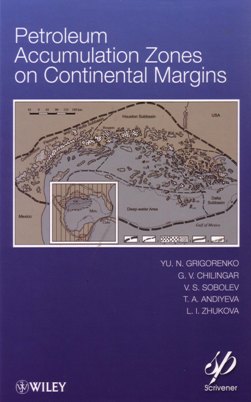 Petroleum Accumulation Zones on Continental Margins
Petroleum Accumulation Zones on Continental Margins
This is an extremely wide-ranging review of petroleum systems along continental margins, both present day and in the geological record. Although there is a reference to the substantial oil and gas in the Russian margins in the very first paragraph, this book is mainly, but not exclusively, a treatise on exporting the Russian methodology outside Russia.
The book has two main sections, ‘topped and tailed’ by an introduction on methodology and a concluding section highlighting the potential use of the methods set out in the book. These two main sections highlight examples of petroleum provinces in the two main genetic continental margins – Atlantic (extensional) and Pacific (compressional). A wealth of technical information is presented on each example in this whirlwind tour. It is not clear why the North African Basins such as Sirte are classed as ‘continental margin’ settings, but they could qualify in that these basins ‘attempted to form’ continental margins.
The methodology is, in effect, to describe petroleum plays as having certain potential in terms of barrels/km2. Although very broad brush, it is very useful in frontier areas and I have found myself looking at field analogues in terms of barrels/km2 as a ‘sense check’. Certainly one can argue the USGS approach to its Worldwide Resource Assessments is in essence the same strategy, with analogues used to guide the boundaries of the parameter distributions in the software model.
The one criticism I have is that the translation from Russian is laboured and makes for a difficult read, especially in the introductory sections. The use of obscure terms such as ‘naphtide’ and ‘domanikite’ could have been better thought through. However, there are gems - such as the statistic that there is as much Jurassic-Pliocene sediment preserved in continental margins as on the continents themselves. I found the basin reviews – four to five pages on each basin – extremely well done, making this book a useful addition to reference when charged with that elusive task of replacing reserves from more and more distant and lesser known basins.
Reviewed by Paul Barrett
PETROLEUM ACCUMULATION ZONES ON CONTINENTAL MARGINS
GRIGORENKO Y N et al., 2012. Published by : John Wiley & Sons. ISBN: 978-1118385074 448pp List Price : £130
http://eu.wiley.com/
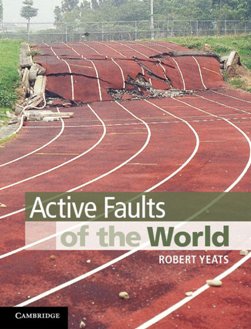 Active Faults of the World
Active Faults of the World
This is a high quality book, well-written with many informative diagrams, useful maps and geological sections. There are many references and a comprehensive index. It is suitable for both academics and students and is particularly good for engineering geologists, civil engineers and planners. It is also useful reference for analysts and consulting firms.
The author notes that the study of faults requires the understanding of several areas of geology, including tectonics, plate tectonics, structural geology, geodesy etc.
He considers regional seismic hazards and active earthquake faults worldwide and then puts them into a regional seismic and plate tectonic context.
Many faults and types of fault from around the world are discussed as are their associated volcanoes and microplates. All the usual suspects turn up: San Andreas, East African Rift, Indonesian thrust, Red River etc. Followed by a discussion on how the earthquakes can be dated; e.g. from historical records to 14C dating to correlation with dated tephra. Histories of some plate movements are given (e.g. the Caribbean, N and S American plates) together with their associated faults.
The book treats South America and the Andes at some length, but does not neglect the other remnants of Pangea, including Europe. The Dead Sea Fault is discussed in considerable detail. The author focuses on the effects of earthquakes (including tsunamis) and on faults with the potential to destroy large cities both in the developed and developing world.
It then moves on to the value of planning for large-scale projects such as nuclear power plants, hydroelectric dams and oil pipelines. It provides an important basis for upgrading building standards and other laws in developing nations.
It looks at the impact of major quakes on social development through history. Two examples are the 1505 earthquake in Kabul, which killed hundreds of people, and the quake which probably caused the destruction of the biblical cities of the plain, Sodom and Gomorrah.
This fascinating and comprehensive survey provides interest for the general geological reader, the planner and the engineer facing the daunting challenge of construction in unstable regions. Highly recommended.
Reviewed by: Steve Rowlatt
ACTIVE FAULTS OF THE WORLD
ROBERT YEATS Published by: Cambridge University Press 2012 Hbk ISBN: 978-0-521-19085-5 621pp List Price £50
www.cambridge.org
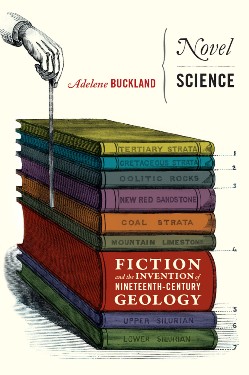 Novel Science
Novel Science
The way in which we imaginatively re-create the past is - like all minefields – a dangerous landscape, greatly in need of a philosophical map. Adelene Buckland, lecturer in 19th Century Literature at King’s College London, has made that journey, and attempts – triumphantly – to get inside the heads of those generations who wrote into existence a properly scientific geology and simultaneously made their greatest contribution to literary form - the 19th Century novel.
Early geologists were deeply concerned with finding appropriate literary (as well as visual) forms that would convey their discoveries without traducing them. The act of writing was for them as essential a part of scientific practice as any other, and they looked to contemporary writers for models. Meanwhile, novelists like Scott, Eliot, Kingsley and even Dickens drew from the new science (and the awareness of deep time that it brought to popular consciousness), and found a new profundity with which to disturb, interrupt and enrich their narratives.
Historians may find it amusing that uniformitarianism – or ‘measuring the past by the ruler of the present’ – is a sin they would call whiggishness: one which Buckland studiously avoids. Yet as constraint on imagination it proved the salvation of historical geology. The other turning point was the foundation of this Society in 1807, which eschewed theorizing in favour of information-gathering. Together, uniformitarianism and theory-free observation laid geology’s claim to realism, rigour and respectability.
Geologists fretted about embodying their science in literary forms that might do violence to their quest for academic dignity, and this anxiety predisposed them against plot. Geologists worried deeply about being coerced by the dictates of motive (i.e., theory), and reviled those popularisers who sought to make their work palatable by succumbing to it. They wished to purge romance - and yet, even as they espoused more classical models, they kept the public’s attention by becoming the romantic heroes of their own personal dramas.
Nineteenth Century novelists, meanwhile, were also laying claim to intellectual high ground, by dissociating themselves from the low-status romancers of previous eras. As both groups strove to attain realism, geologists discovered Scott - and he them. The story of how they, and successive generations of geologists and novelists, helped one another to write the past into existence, is Buckland’s material.
Since 1983, when Gillian Beer produced her seminal Darwin’s Plots, the relationship between science and literature has proved a rich seam of inquiry. Buckland shows herself equal to this multidisciplinary challenge, and demonstrates comprehensively how wrong scientists might be, should they wonder if anything new remains to be said about the 19th Century novel.
Reviewed by Ted Nield
NOVEL SCIENCE – FICTION AND THE INVENTION OF NINETEENTH CENTURY GEOLOGY
ADELENE BUCKLAND. Published by: Chicago UP 2013. ISBN 978-0-226-07968-4 Cloth. 364pp List Price: £29.00
www.press.uchicago.edu